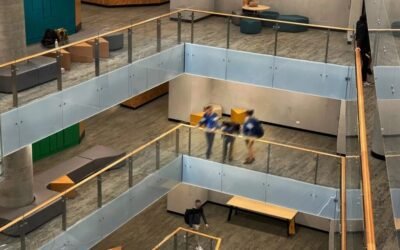By Christopher Kelly:
Higher Degree Research (HDR) students at Western Sydney University’s School of Science and Health are facing tighter Research Training Scheme (RTS) budgets this year following a higher influx of Masters of Research (MRes) students for 2017.
MRes student Christian Viney, who will be starting his research this year, has had to reconsider the type of research he can undertake when his expected budget of up to $7,000 was cut to $3,500 for 2017.
“The scope of my project has been narrowed a fair bit,” he said. “So some of the things I was hoping to do, that probably would have been more innovative, can’t really happen now, or is more unlikely to happen.”
To avoid duplications and overspending, a lot of resources that are used by students are required to be shared among groups, a standard at WSU. However, some students may require specific resources for their projects, which, according to Director of HDR Dr Graham Jones, is hard to approve.
“[For instance] there is a certain subset of the cells that I want to use that are quite expensive, they’re about a thousand [dollars] a vial, which I’m pushing it to do that because if I spend that thousand dollars I’ve only got $2,500 left. I’ve got to be strategic in the way that I approach it,” Christian said.
Before the announced funding cuts, all HDR students had a budget of up to $7,000, which would cover direct research costs such as laboratory consumables and support for clinical trials. But in 2017, the newly allocated budgets for HDR students have been cut and split into three categories:
MRes students who have already started their projects on a prior budget in 2016 and are completing their projects in April 2017 will now have access to only $2,500; MRes students commencing their research in 2017 will have access to $3,500; and PhD research students will access $4,500.
In response to aggrieved students coming forward, director of HDR Dr Graham Jones at the School of Science and Health says affected students should contact him for help.
“If they find they are unable to fund whatever it is they need in terms of equipment, then what they need to do is contact me and discuss it,” Dr Jones said.
“But the first point of call is their supervisors, that’s the job of the supervisor; [it] is to really manage that RTS budget and whatever other grant money they happen to have in the lab.”
The Research Training Scheme, which was recently changed to Research Training Program (RTP), is a government program where funds are granted to universities across Australia, then the universities distribute to the schools based on student numbers.
“However, given that it’s a government grant, it’s not real time. In other words, the government doesn’t say, ‘how many students do you have in 2017?’, rather they award funding based on one to two years in arrears,” he said.
According to Dr Jones, the RTS funding cuts came following an influx of 40-50 new HDR students after bringing their Masters of Research online for 2017.
“So to accommodate our Masters of Research and all of our other Higher Degree Research students, we have a pot of money of a defined size and that needs to be distributed fairly and equitably to all of our students,” he said.
While many MRes and PhD students remain unaffected by the RTS funding cuts, there are some, like Christian Viney earlier, who are coming forward to speak out.
Another MRes student, who will also complete his research in September and wishes to remain anonymous, said he has also been affected by the funding cuts.
“The budget cut was more an inconvenience than anything else, I budgeted for $7,000 and had initially designed my project to reflect that, so I actually had to scrap some aspects as I now can’t afford it,” he said.
“I like this university, I’m proud to be a student here, I was just a little disheartened as I had put a lot of time and effort into the project proposal, it was something I’d be proud of.”
“Now with the budget cut, I don’t think I can do the project justice, it’s just going to be a larger pilot project.”
*Dr Jones would like to emphasise that the RTS funding that provides direct research support for students at Western Sydney University is still very generous. He would also like to reiterate that if any student or supervisor has any questions regarding RTS funding or the HDR portfolio in general, they should request a meeting via our dedicated email address: HDR_ssh@westernsydney.edu.au. Dr Jones will be again running a HDR Roadshow at all of our Science and Health campuses early in Autumn semester. This will provide an opportunity for all supervisors and HDR students to question Dr Jones about all aspects of the HDR portfolio.



